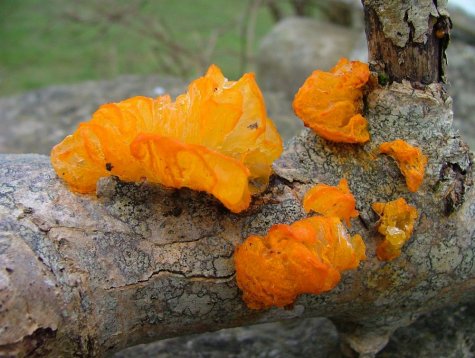Reader’s letter from Saaremaa: Winter in the sky
Text and photos Jaanis Prii, jaanis@cassiopeia.ee
Translation Liis
Some time ago I found this a ”work of art” in the forest. Frozen it was interesting but when it thawed nothing of the beauty remained, only a jelly-like being. Comments from anyone who knows more are welcome.
Proper winter has not been seen in Saaremaa this year. While Christmas Eve showed a ground that was green, a slight snow fell on Christmas day . A few days later a proper 15 cm thick snow cover was added that however again was brought away by New Year by warmth and snow. Such weather, one moment a couple of plus degrees then again a few degrees minus, the weather god has served us from the turn of the year up to today. Any more snow worth notice has however not fallen since then.
The backbone of winter should now have been broken long ago. It is another question if this should take place on the Taliharjapäev (January 15, Crest of winter day), Tõnisepäev (January 17, St Anthony’s Day), Paavlipäev (January 25, St Paul’s Day), Küünlapäev (February 2, Candlemas Day) or even on Madisepäev (February 24, St Matthew’s Day). All of them have been thought to have “winter divider” properties. Paavlipäev and Küünlapäev (Candlemas Day) are more common as half-winter markers on the islands and West Estonia.
It has been suggested that the Taliharjapäev is an astronomical winter divider, the time when Milky Way (the crest or backbone) is above one’s head, and that it is an orientation mark from the moon calendar. Heino Eelsalu in his book „Ajastult ajastule (From age to age)“ (Tallinn, 1985) even proposes the idea that the later the ”middle of winter day” was celebrated in a region the later the transition from moon calendar to sun calendar took place there.
Be that as it may but weather prophets have offered very different opinions on the second half of the present winter. ”Spruce granddad” Elmar Kuuse predicted that there will be no more winter already several weeks ago and spring will be early and warm. American meteorologists however foresaw a very cold second half of winter. We will see whether winter really will stay in the sky or not. Some years it has really stayed there, and signs of coming cold periods are not in sight on weather charts.
Although there has been no proper winter the cold has been sufficient for the ice to bear. In contrast to mainland ice, there is no snow on the Väike väin (Small Strait). Thanks to this there have been ice yachting competitions every weekend there.
Note:
Winter in the sky: refers to ”Talv ei jää taevasse” – Winter will not stay in the sky, Estonian saying meaning that sooner or later winter will come.









